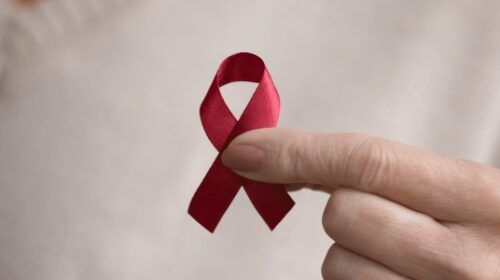It feels like we can’t go a week without seeing another news headline about fentanyl. The potent synthetic opioid is more than a drug—it’s become a public health crisis.
Every day, over 150 people die from overdoses related to synthetic opioids like fentanyl. Although your doctor can prescribe it, the misuse and abuse of this powerful drug have contributed to a devastating epidemic.
It’s up to us to take action against illegal fentanyl use. Educate yourself about the drug, its effects, and how it can impact individuals and communities. Understanding the risks is the first step toward prevention and intervention.
Understanding Fentanyl
Fentanyl is a synthetic opioid approved by the Food and Drug Administration (FDA) to treat severe pain. Doctors prescribe fentanyl to help alleviate pain, especially after surgery and for people with advanced-stage cancers.
Fentanyl works by changing the way a person’s brain and nervous system respond to pain. It binds opioid receptors in your brain, spinal cord, and other body parts, blocking pain signals from being transmitted to the brain.
This pain-blocking decreases the perception of pain and can cause the person to feel relaxed and euphoric. However, fentanyl can also affect other neurotransmitter systems in the brain, including ones involved in mood regulation, arousal, and reward.
Understanding how fentanyl works is crucial for recognizing its potential risks and developing strategies for safe and effective pain management.
Fentanyl can be prescribed in shot, patch, or tablet form. Illegally made fentanyl (IMF) is created in labs and sold as a powder, as a drop on blotter paper, or put in eye droppers and nasal sprays. Additionally, prescribed fentanyl can be illegally made into pills that mimic other prescription opioids.
Short-term effects on the body and mind
When someone uses fentanyl, they may experience immediate relief from pain. However, it can also lead to additional short-term effects, including:
- Euphoria or feeling high
- Drowsiness or sedation
- Nausea and vomiting
- Confusion or disorientation
- Slowed breathing or respiratory depression
These effects can be intense and potentially dangerous, becoming even more dangerous if fentanyl is misused or taken in high doses.
Long-term consequences of fentanyl use
Those prescribed fentanyl should use the drug in the proper amount and length of time noted by their doctor. Using fentanyl over a long period can have severe physical and mental health consequences such as:
- Tolerance
- Dependence
- Addiction
- Respiratory problems
- Mental health issues
Misuse or abuse of fentanyl can have devastating effects on a person’s health and well-being.
How is it different from other opioids?
Fentanyl is highly potent—50 times stronger than heroin and 100 times stronger than morphine, which means that even in tiny amounts, fentanyl can have a significant impact on the body, making it much more challenging to manage and treat.
Why is it so dangerous?
If misused or taken without medical supervision, fentanyl is extremely dangerous. As little as 2mg of fentanyl, which is equivalent to just a few grains of salt, can be lethal. This increases overdose and death risk, as even a tiny dosage miscalculation can have severe consequences.
Because fentanyl looks like other drugs, some people mix substances to increase their effects. Because of its extremely high potency, fentanyl addiction can begin after someone’s first use.
Synthetic opioids, including fentanyl, have become the most common drugs involved in overdose deaths. The alarming rise in fentanyl-related deaths reflects the urgency of addressing this crisis.
Scope of the Crisis
Fentanyl-related overdoses usually come from illegally made fentanyl. In these cases, someone adds fentanyl to other drugs like cocaine, heroin, methamphetamine, and MDMA without the user’s knowledge.
This allows people selling drugs to sell more for less. It also increases the user’s chance of addiction, overdose, and death. Many people who die from fentanyl-related overdoses were completely unaware they had ingested the drug, which is why it is so dangerous.
To be clear, there is no “safe” amount of IMF. According to the grassroots awareness group Facing Fentanyl, “Overdose suggests that an excessive amount of something has been used. We want the public to understand that there is no safe dose of illicit fentanyl.”
The fentanyl crisis has had a profound impact on communities and families across the globe, including strained resources, a staggering number of lives lost, economic impacts, and an increased stigma around addiction.
How To Recognize An Overdose
If someone experiences an overdose of fentanyl, their breathing will slow or stop, which means less oxygen is getting to their brain, possibly leading to coma, permanent brain damage, or death.
The CDC lists the following signs of overdose:
- Small, constricted “pinpoint pupils”
- Falling asleep or losing consciousness
- Slow, weak, or no breathing
- Choking or gurgling sounds
- Limp body
- Cold and clammy skin
- Discolored skin (especially on lips and nails)
If you suspect someone is experiencing an overdose, or if you’re not sure, call 911 immediately. Administer naloxone, if available, and try to keep them awake and breathing. Lay them on their side to prevent choking and stay with the person until emergency help arrives.
Although there are other formulations and brand names for naloxone, it’s commonly referred to as NARCAN®, the first medication approved to reverse opioid overdoses.
Because fentanyl is more potent than other opioids, multiple doses of naloxone may be required. In most states, you can purchase naloxone from your local pharmacy without a prescription.
Opioid overdose prevention strategies
The CDC provides evidence-based strategies states and other local jurisdictions can take to prevent overdoses:
- Targeted naloxone distribution
- Medication-Assisted Treatment (MAT)
- Academic detailing
- Eliminating prior-authorization requirements for medications for opioid use disorder
- Screening for fentanyl in routine clinical toxicology testing
- 911 good samaritan laws
- Naloxone distribution in treatment centers and criminal justice settings
- MAT in criminal justice settings and upon release
- Initiating buprenorphine-based MAT in emergency departments
- Syringe services programs
Can You Become Addicted To Fentanyl?
The extreme potency of fentanyl makes it highly addictive. A person prescribed the drug can experience dependence and withdrawal symptoms when they stop taking it. Experiencing dependence does not mean you are addicted, but it can lead to addiction in some cases.
The CDC lists symptoms of fentanyl withdrawal for those addicted as:
- Muscle and bone pain
- Sleep problems
- Diarrhea and vomiting
- Cold flashes with goosebumps
- Uncontrollable leg movements
- Severe cravings
Treating Fentanyl Addiction
When used in combination, medication and therapy can be effective in treating people with opioid addiction.
Detoxification and withdrawal management
Detox is often the first step in treating fentanyl addiction, involving safe withdrawal symptom management when someone stops using. The process can be extremely uncomfortable and challenging, but it’s essential for their health and safety.
Medication-assisted treatment (MAT)
MAT is a reliable and proven method to treat substance use disorder (SUD). Here are some of the benefits:
- Treatment specific to the individual’s needs
- Prevents withdrawal symptoms
- Helps taper off substances
- Improves treatment retention
- Reduces the risk of overdose
- Helps address co-occurring disorders
- Improves overall quality of life
The three FDA-approved medications to treat opioid use disorder (OUD) are buprenorphine, naltrexone, and methadone.
Therapy and counseling
Working with a therapist can help you identify the link between your thoughts and actions to understand your behavior. Additionally, in therapy you learn about cravings, physical symptoms, and relapse-prevention skills.
Therapy can take various forms, including individual counseling, group therapy, and family therapy. The type of therapy recommended by treatment programs may depend on the person’s needs and preferences. Regardless of the approach, therapy provides a valuable opportunity to learn about yourself, heal and grow, and recover from addiction.
Recovery Support and Advocacy
Aftercare planning is essential for maintaining recovery after any formal treatment program. This may involve creating a relapse prevention plan and strategies for managing triggers and cravings. Aftercare services provide continued support and guidance as people navigate their lives in sobriety after treatment.
Peer support groups such as Narcotics Anonymous (NA) provide a supportive environment to connect people experiencing similar challenges in their recovery journey.
Family therapy sessions can play a crucial role for people in treatment by helping improve communication, rebuilding trust, and addressing underlying family dynamics that may have contributed to addiction.
Community action
In addition to individual support, community involvement plays a vital role in addressing the fentanyl crisis and supporting people affected by addiction. Here are some advocacy efforts and initiatives:
- Awareness efforts
- Harm reduction initiatives
- Address contributing systemic issues
- Providing community resources
- Amplifying voices of those impacted by addiction
- Outreach events
Building a supportive community and advocating for change also help in addressing the fentanyl crisis and supporting individuals on their recovery journey.
On August 21, Facing Fentanyl and other awareness organizations and families impacted by fentanyl coordinated National Fentanyl Prevention and Awareness Day. This day is dedicated to public education about the dangers of fentanyl and the poisoning risks of fake pills and other illicit drugs.
In 2022, various nonprofit organizations, major corporations, government agencies, and schools launched another campaign: National Fentanyl Awareness Day, recognized on May 7th to raise awareness about illicit fentanyl in fake pills and street drugs.
By educating ourselves and advocating for effective interventions, together, we can raise awareness and support those impacted by fentanyl addiction.
If you or someone you know needs support, call Recovery Unplugged at 1 (855) 384-5794.

























